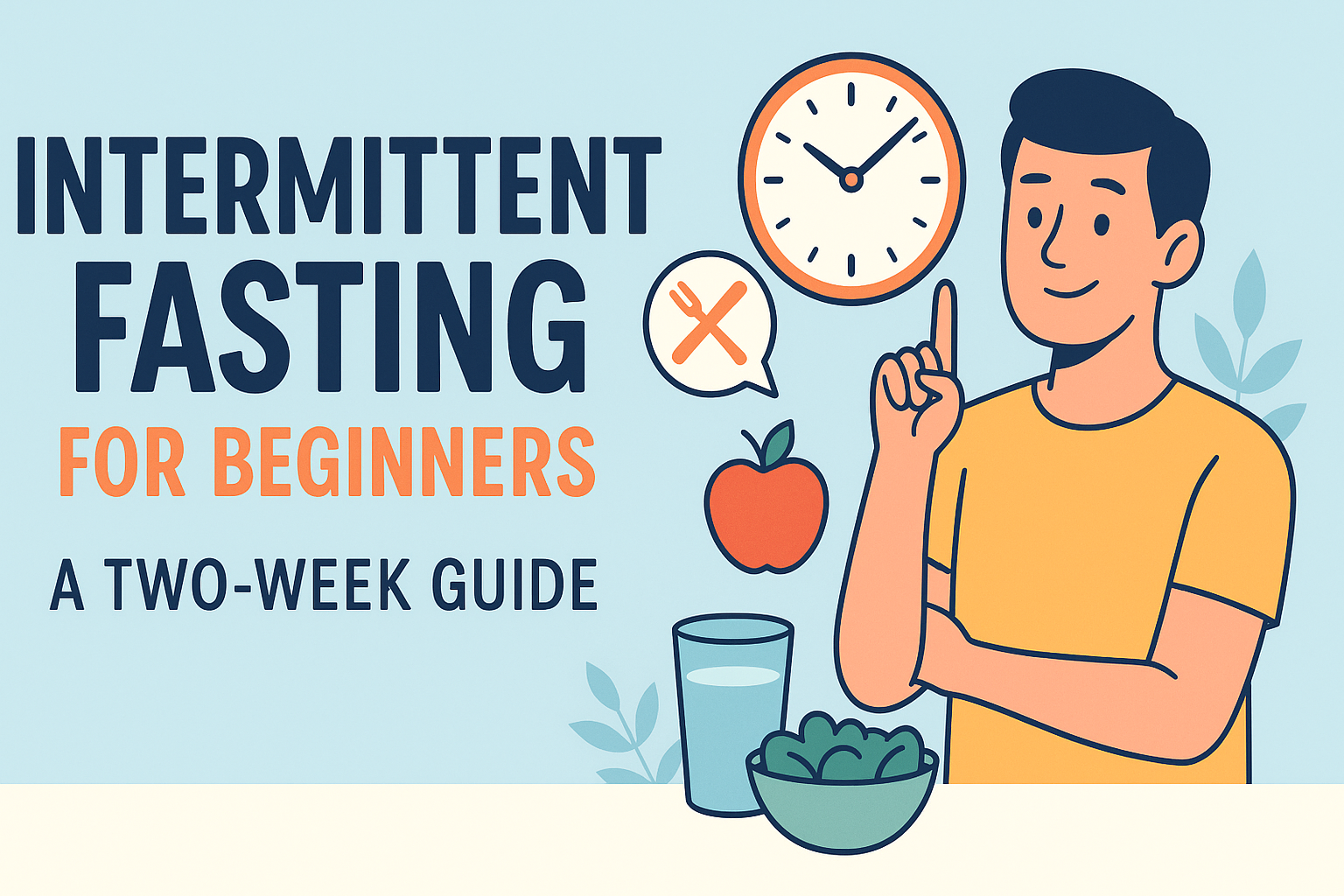Intermittent fasting has surged in popularity as a flexible, effective way to support weight management, metabolic health, and overall well-being. This beginner guide will walk you through the principles of intermittent fasting, outline a simple fasting schedule, and provide a two-week plan to help you get started safely and sustainably.
What Is Intermittent Fasting?
Intermittent fasting (IF) is an eating pattern that alternates periods of eating with periods of voluntary abstention from food. Unlike traditional diets, IF focuses less on what you eat and more on when you eat. Common IF protocols include:
- 16:8 Method: Fast for 16 hours, eat during an 8-hour window each day.
- 5:2 Approach: Eat normally five days per week, restrict calories (~500–600) on two non-consecutive days.
- Alternate-Day Fasting: Fast every other day, either by complete fasting or very low (<25%) caloric intake.
Health Benefits of Intermittent Fasting
- Weight Management: Reduces overall calorie intake and may boost fat burning.
- Improved Insulin Sensitivity: Helps regulate blood sugar and lower insulin levels.
- Cellular Repair: Fasting triggers autophagy, a cleanup process that recycles damaged cells.
- Heart Health: May reduce risk factors like blood pressure, cholesterol, and inflammation.
Your Two-Week Fasting Schedule
This fasting schedule uses the 16:8 method, which is ideal for beginners. You’ll gradually adapt over two weeks by adjusting your eating window and meal timing.
Week 1: Adaptation Phase
- Days 1–3: 12:12 fast-eat window. For example, eat between 8 AM–8 PM, fast 8 PM–8 AM.
- Days 4–7: Shift to 14:10. Eat between 10 AM–8 PM; fast 8 PM–10 AM.
Week 2: Full 16:8 Protocol
- Days 8–14: 16:8 fast-eat window. Eat between 12 PM–8 PM; fast 8 PM–12 PM the next day.
Sample Daily Routine
- Morning (Fasting): Black coffee, plain tea, or water until lunch.
- Lunch (12 PM): Balanced meal with protein (chicken, tofu), fibrous vegetables, and healthy fat (avocado, olive oil).
- Afternoon Snack (3 PM): Greek yogurt or handful of nuts.
- Dinner (7 PM): Lean protein, non-starchy vegetables, and a side of whole grains or legumes.
- Fasting Begins (8 PM): No calories until noon the next day; continue hydrating freely.
Tips for Success
- Stay Hydrated: Drink plenty of water, herbal tea, or sparkling water throughout your fasting period.
- Mindful Eating: When your window opens, focus on nutrient-dense, whole foods to satisfy hunger and nourish your body.
- Listen to Your Body: It’s normal to feel some hunger initially—if you feel dizzy or unwell, break your fast with a small, balanced snack.
- Consistency is Key: Stick to your fasting and eating windows each day to establish a routine and optimize results.
- Adjust as Needed: If 16:8 feels too restrictive, extend your eating window by an hour or two until you adapt.
Common Beginner Questions
- Can I exercise while fasting?
- Yes—many people perform light to moderate workouts (walking, yoga, strength training) in a fasted state. Stay hydrated and listen to your energy levels.
- What about medications?
- Take medications with water during your fasting window. Consult your healthcare provider if you have concerns or underlying conditions.
- Will I lose muscle?
- Maintaining adequate protein intake and incorporating resistance training helps preserve lean muscle mass during fasting.
Conclusion
This beginner guide and two-week fasting schedule provide a structured, approachable way to start intermittent fasting. By progressively extending your fasting window to 16 hours, choosing nutritious meals, and staying hydrated, you’ll set the stage for long-term health benefits and sustainable weight management. Ready to take on the challenge? Your two-week journey begins now!

